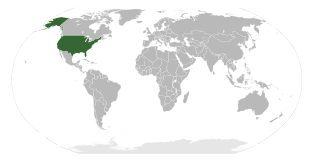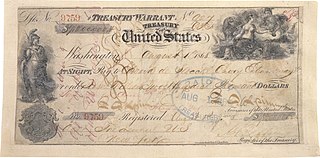It has been requested that the title of this article be changed to List of governors of Alaska . Please see the relevant discussion on the discussion page. The page should not be moved unless the discussion is closed; summarizing the consensus achieved in support of the move. |
| Governor of Alaska | |
|---|---|
 | |
| Residence | Alaska Governor's Mansion |
| Term length | Four years, renewable once |
| Inaugural holder | William A. Egan |
| Formation | January 3, 1959 |
| Deputy | Valerie Davidson |
| Salary | $145,000 [1] |
| Website | gov.alaska.gov |
The Governor of Alaska is the chief executive of the U.S. state of Alaska. The governor is the head of the executive branch of Alaska's state government and is charged with enforcing state laws.
Head of government is a generic term used for either the highest or second highest official in the executive branch of a sovereign state, a federated state, or a self-governing colony, who often presides over a cabinet, a group of ministers or secretaries who lead executive departments. The term "head of government" is often differentiated from the term "head of state", as they may be separate positions, individuals, or roles depending on the country.

In the United States, a state is a constituent political entity, of which there are currently 50. Bound together in a political union, each state holds governmental jurisdiction over a separate and defined geographic territory and shares its sovereignty with the federal government. Due to this shared sovereignty, Americans are citizens both of the federal republic and of the state in which they reside. State citizenship and residency are flexible, and no government approval is required to move between states, except for persons restricted by certain types of court orders. Four states use the term commonwealth rather than state in their full official names.

Alaska is a U.S. state in the northwest extremity of North America, just across the Bering Strait from Asia. The Canadian province of British Columbia and territory of Yukon border the state to the east and southeast. Its most extreme western part is Attu Island, and it has a maritime border with Russia to the west across the Bering Strait. To the north are the Chukchi and Beaufort seas—southern parts of the Arctic Ocean. The Pacific Ocean lies to the south and southwest. It is the largest U.S. state by area and the seventh largest subnational division in the world. In addition, it is the 3rd least populous and the most sparsely populated of the 50 United States; nevertheless, it is by far the most populous territory located mostly north of the 60th parallel in North America: its population—estimated at 738,432 by the United States Census Bureau in 2015— is more than quadruple the combined populations of Northern Canada and Greenland. Approximately half of Alaska's residents live within the Anchorage metropolitan area. Alaska's economy is dominated by the fishing, natural gas, and oil industries, resources which it has in abundance. Military bases and tourism are also a significant part of the economy.
Contents
- Governors before statehood
- Commanders of the Department of Alaska
- Governors of the District of Alaska
- Governors of the Territory of Alaska
- Governors of the State of Alaska
- See also
- Notes
- References
- External links
Eleven people have served as governor of the State of Alaska over 13 distinct terms, though Alaska had over 30 civilian and military governors during its long history as a United States territory. Only two governors, William A. Egan and Bill Walker, were born in Alaska. Two people, Egan and Wally Hickel, have been elected to multiple non-consecutive terms as governor. Hickel is also noted for a rare third party win in American politics, having been elected to a term in 1990 representing the Alaskan Independence Party. The longest-serving governor of the state was Egan, who was elected three times and served nearly 12 years. The longest-serving territorial governor was Ernest Gruening, who served 13½ years.

United States territory is any extent of region under the sovereign jurisdiction of the federal government of the United States, including all waters and all U.S. naval vessels. The United States asserts sovereign rights for exploring, exploiting, conserving, and managing its territory. This extent of territory is all the area belonging to, and under the dominion of, the United States federal government for administrative and other purposes. The United States total territory includes a subset of political divisions.

William Allen Egan was an American Democratic politician. He served as the first governor of the State of Alaska from January 3, 1959 to 1966 and 1970 to 1974. Born in Valdez, Alaska, Egan is one of only two governors in the state's history to have been born in Alaska. He was the Democratic nominee in five gubernatorial elections.

William Martin Walker is an American attorney and politician who served as the 11th governor of Alaska, from 2014 to 2018. He is the second native-born governor of Alaska after William A. Egan.
The current governor is Republican Mike Dunleavy, who took office on December 3, 2018.

Michael J. Dunleavy is an American politician who is the 12th governor of Alaska, serving since December 2018. A Republican, Dunleavy was a member of the Alaska Senate from 2013 through 2018. Dunleavy defeated former Democratic United States Senator Mark Begich in the 2018 gubernatorial election.

















































